- Home
- insider picks
- news
- I've flown in long-haul economy on 9 international airlines over the past year. The 5-star airlines were clearly better than the rest.
I've flown in long-haul economy on 9 international airlines over the past year. The 5-star airlines were clearly better than the rest.
Taylor Rains

- I've flown in the economy cabin on 9 different international airlines since last July.
- My best experience was on a five-star airline, while the worst was on a Spanish budget carrier.
Since last summer, I've spent over one hundred hours crisscrossing the globe on a variety of different international airlines.
My collection of flights includes trips on Asian carriers Singapore Airlines, Korean Air, and All Nippon Airways, North American airlines Air Canada, Delta Air Lines, and United Airlines, European low-cost carriers Norse Atlantic Airways and LEVEL, and Argentinian flag carrier Aerolineas Argentinas.
I had varying expectations going into each flight. While there were a few surprises, I think the carriers from Asia are easily in a league of their own. They beat every other carrier in almost every aspect of the inflight experience, from legroom and food to pillow size and storage space.
Here's a closer look at how the 9 airlines compare.
Comparing these economy cabins, each one had the typical bells and whistles of coach: a headrest, padded-enough seats, and a fine inflight entertainment system.
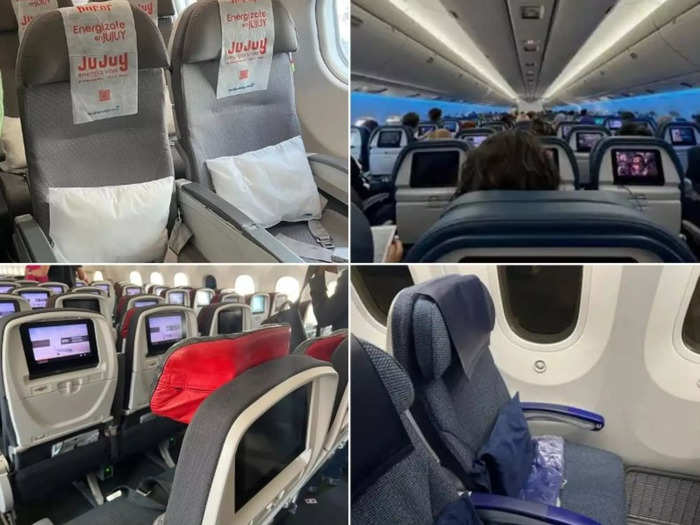
I put a more-than-average stake in an airline headrest because it's the only way I can comfortably sleep in economy, and all nine airlines thankfully checked that box. And, while some airlines are more-cushioned than others, the seat padding was fine across the board.
Plus, none had an embarrassingly small television or lousy movie options, and a few airlines including Korean and Aerolineas had a remote included with the seatback screen.
I was also able to charge my electronics on almost every flight, minus one.
But, it's the more detailed amenities, like seatback pocket space, unique food, cupholders, and footrests, that make some airlines better than others.
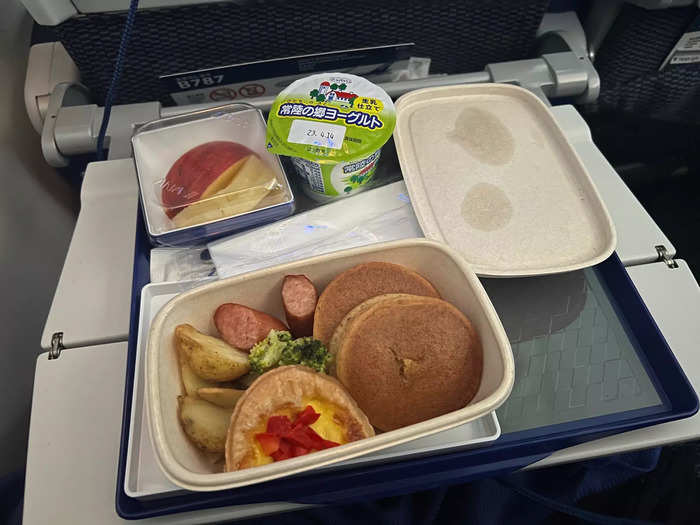
For example, the design of the tray table varied across the board, with some having better features and adjustability. Others shined in terms of food.
Meanwhile, some airlines even offered a footrest — a rarity in economy.
Out of the handful of airlines I've flown on since last July, Singapore and Japan's largest airline ANA are easily the best of the bunch, followed closely by Korean.
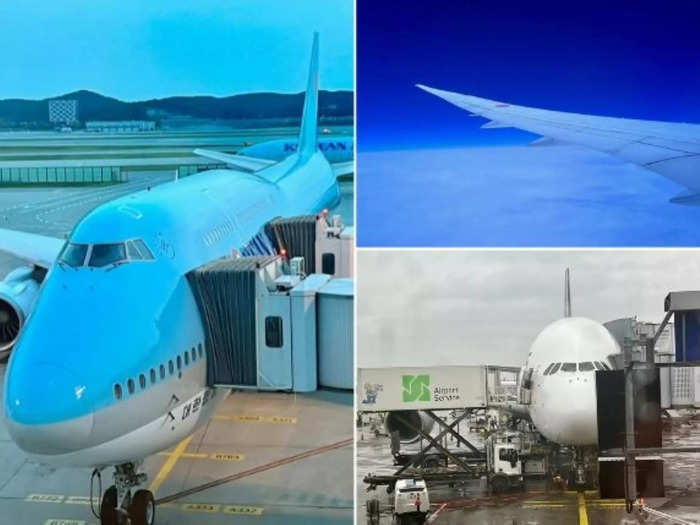
I flew on Singapore from Frankfurt to the island nation in January, riding for 12 hours in its Airbus A380 economy cabin. Then, I took a 10-hour flight on ANA's Boeing 787 in March between Tokyo's Haneda Airport and Los Angeles International Airport.
My most recent journey was from Seoul to New York on Korean's legendary Boeing 747-8i, meaning I've now flown in economy on three of Skytrax's 10 five-star airlines — and it's easy to see why they are considered some of the world's best.
Insider paid a discounted rate for the flights.
The first two carriers boasted well-padded seats and generous legroom — 32 inches on Singapore and 34 inches on ANA.
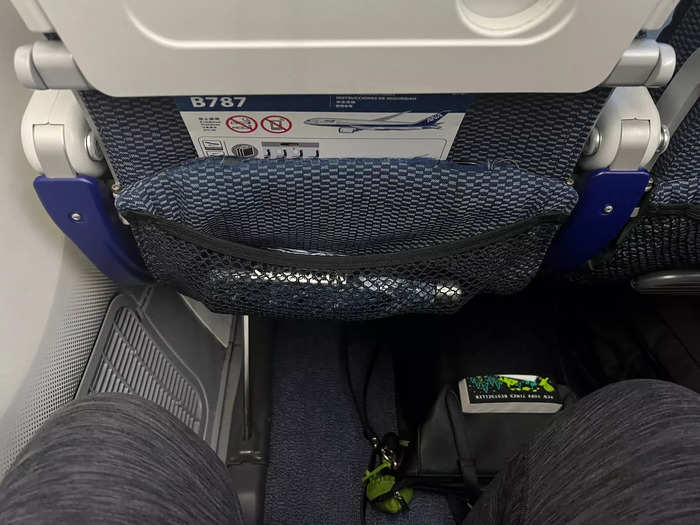
The legroom is a huge selling point when comparing comfort between airlines. My flights on United's Boeing 767, Aerolineas' Airbus A3330, and Air Canada's 787 offered 31 inches of pitch in the main cabin — meaning ANA is leaps ahead of the western carriers in terms of space.
My seat pitch on Norse's Boeing 787 was also 31 inches, though the company says some seats onboard offer 32 inches.
Extra legroom seats are available, but I didn't upgrade on any of my flights
Singapore had the best seat width at 19 inches, though you'll find some 767 configurations on United have 18.5 inches of width. Norse, Air Canada, and Aerolineas are only at about 17.
Delta had 32 inches of pitch and about 18 inches of width, while LEVEL was at the bottom of the pack — but more on those two later.
Also impressing me was the ample storage space on both carriers, with the seatback pockets’ various slots making it easier to organize my stuff.
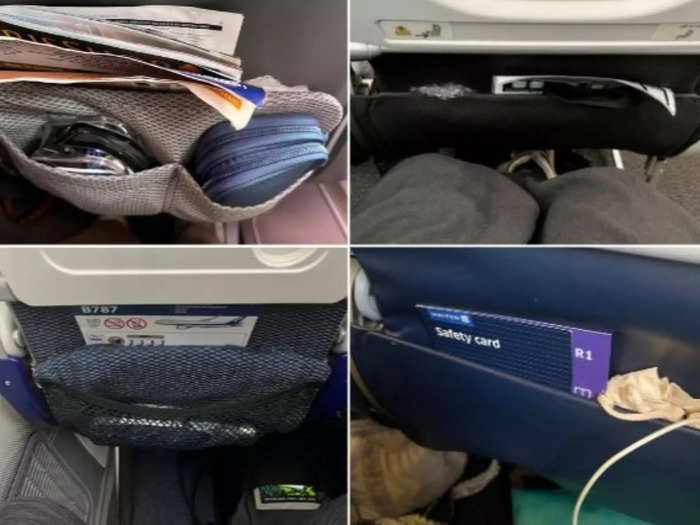
Both ANA and Singapore had enough pockets available to hold my chargers, medicine kit, book, laptop, and water bottle. But Singapore had the best overall storage thanks to another little cubby located under the TV.
The seatback pockets on Air Canada, United, Delta, Norse, Aerolineas, Korean, and LEVEL were all just the one big pocket meant to hold everything that you don't want to shove under the seat.
As far as Korean, it also boasted an incredible amount of legroom and was the only airline of the nine to offer a proper amenity kit in economy.
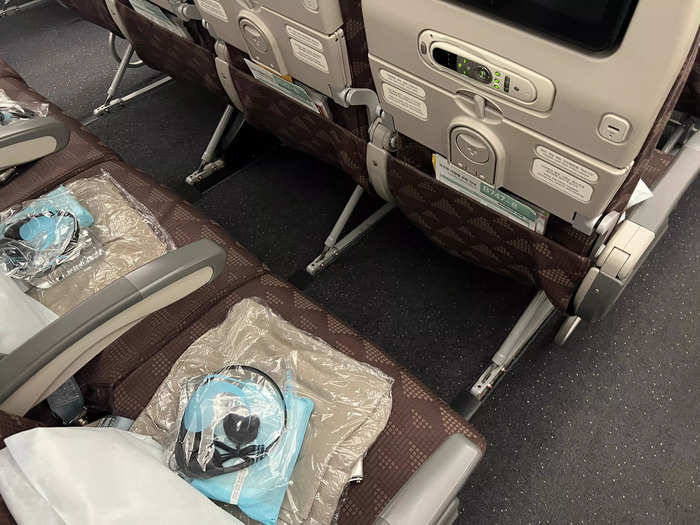
Korean offers 33-34 inches of legroom on its Boeing 747-8i passenger jet, meaning it's much more spacious than Singapore and is on par with ANA. And I loved the amenity kit, which came with an eye mask, slippers, earplugs, and a toothbrush and toothpaste.
Singapore and Delta also offered an eye mask — one of the many reasons the latter beats United, in my opinion.
However, the Seoul-based carrier lacked onboard WiFi and had minimal storage space.
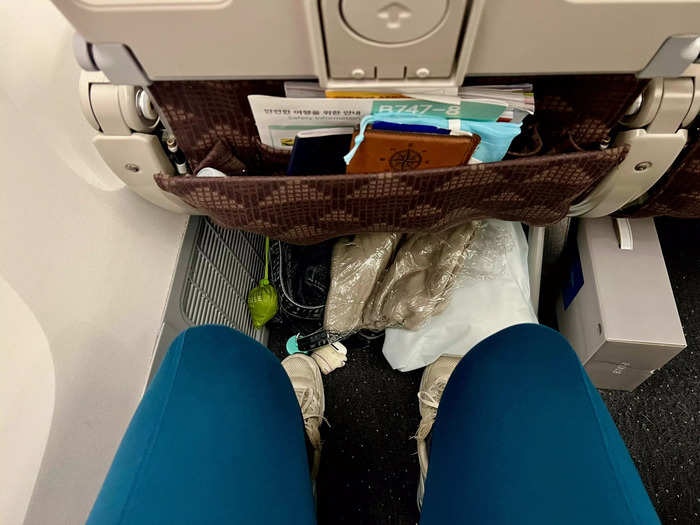
Every other carrier except Korean and Aerolineas offered internet access, and Korean had a pretty basic seatback pocket.
On my Korean flight from Seoul to New York in mid-September, I only had enough space for all of my items because the middle seat was luckily empty.
And, although Korean had a nice blanket, the pillow could be improved — it reminded me of United's due to the texture of the pillowcase.

I really don't like United's long-haul pillow. It's scratchy and it doesn't fit around my neck the way it's intended to. Korean's had a similar feel, but the pillow was at least less flimsy and its regular shape meant I could more comfortably rest it against the cabin wall.
The pillows on Air Canada, Aerolineas, and Delta were similar.
As far as the blanket, the ones offered on ANA, Delta, and United were similarly cozy. Singapore easily has the thickest pillow and blanket out of the nine, though.
Norse and LEVEL, however, did not offer free linens thanks to their a-la-carte business model typical of low-cost carriers — so plan to pay up, bring your own, or go without.
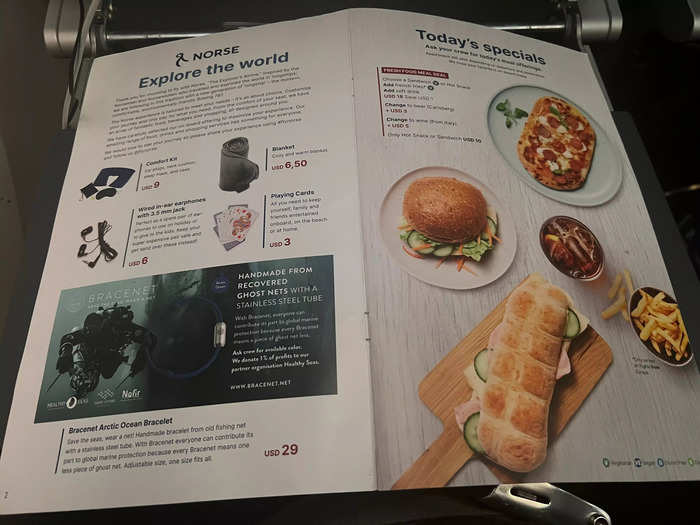
According to LEVEL, "comfort kits" and headsets are included in its two highest fares: Premium Comfort and Premium Extra. Passengers who book the lower-tier bundles, including Light, Comfort, and Extra, can get linens for an additional fee.
A similar system is used on Norse, where I ended up buying the headphones for $6 because I forgot my wired set at home.
Speaking of LEVEL, its budget model also means it offered the worst pitch at just 30 inches — and it was the worst ride of the group.
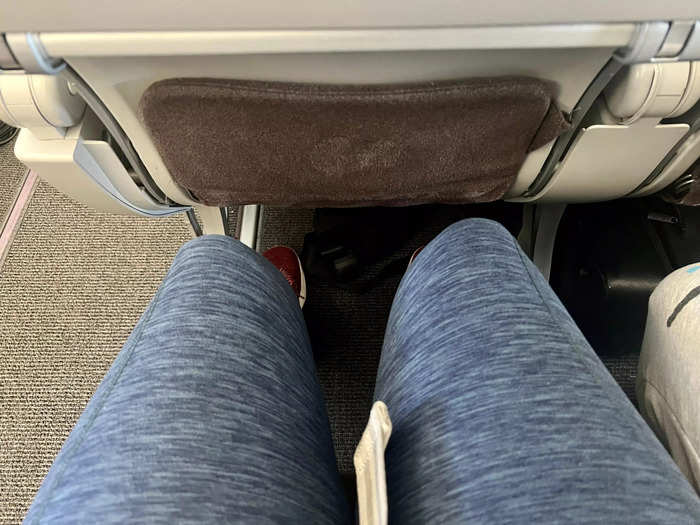
In April, I took a roundtrip flight on Spain's LEVEL in April between New York and Barcelona. While the seat had a headrest, it felt the least cushioned and there was next to no legroom.
I don't mind the 28-30 inches of pitch on domestic flights, and, up until flying LEVEL, I didn't think I would be bothered by it flying long-haul considering I'm only 5 feet and three inches tall.
But it definitely made it impossible to sleep, and when the seats reclined the small space was made even worse — and it wasn't well-remedied when I reclined myself.
The same deep recline is on Singapore, but the legroom and extra amenities added to the seat make it actually comfortable.
Delta was the only North American carrier that offered up to 32 inches of pitch, and my flight was actually one of the better transatlantic journeys I'd been on up until that point.
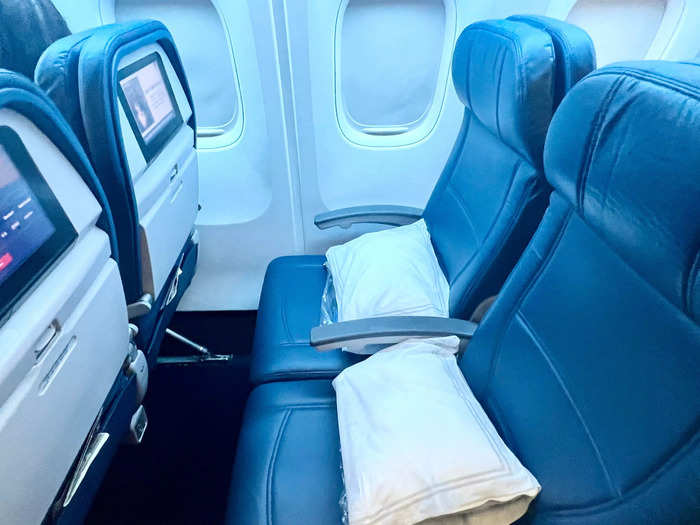
My flight on Delta from Sweden to New York last August was one of the best transatlantic flights I've been on, mostly thanks to the food, speedy WiFi, and the space — and that was despite being in the middle seat.
The Atlanta-based carrier's other widebody aircraft including its Airbus A330s and Airbus A350s also offer the same 31-32 inches of pitch, according to SeatGuru.
Granted, I flew on Delta — as well as many of the others — before I flew on ANA and Singapore. And, the latter flights have definitely soured my overall view of the other airlines.
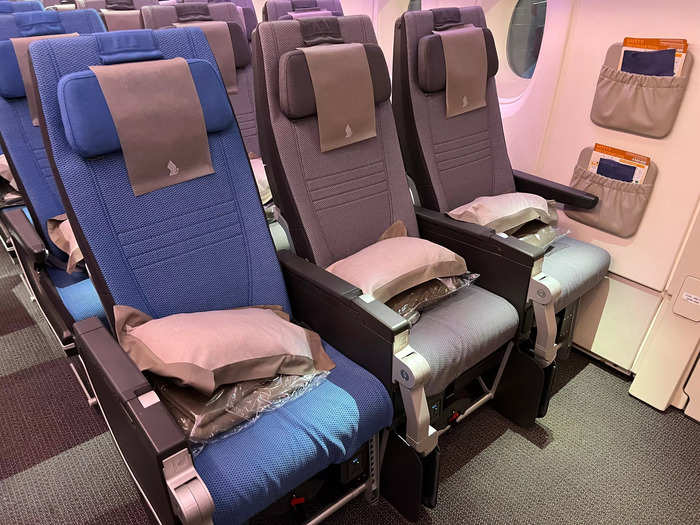
Before I flew for the first time on any five-star airline, I had experienced Delta, United, Air Canada, and Aerolineas. I flew on Norse, LEVEL, and again on United after ANA and Singapore this year.
Essentially, Singapore, ANA, and even Korean — to an extent — take the basic necessities of long-haul flying and simply elevate it to a higher standard.
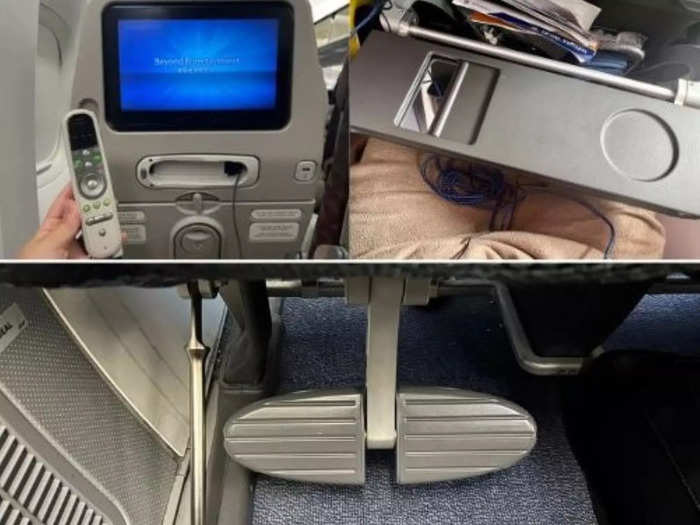
My recent flight on Korean a few weeks ago has really driven the reality that these 5-star carriers are simply better than those in the US.
Singapore and ANA have overall better comforts and amenities, like bigger storage and fluffier linens. Korean shined for its generous legroom, plus the handheld remote was a nice touch.
Meanwhile, Singapore had a unique tray table with a hidden mirror, and ANA even sported a footrest — something uncommon to find in economy as it's typically reserved for premium economy products.
The only other carrier to offer a footrest was — surprisingly — Aerolineas.
This was particularly blatant after my recent United flights between London and Newark, New Jersey, in August.
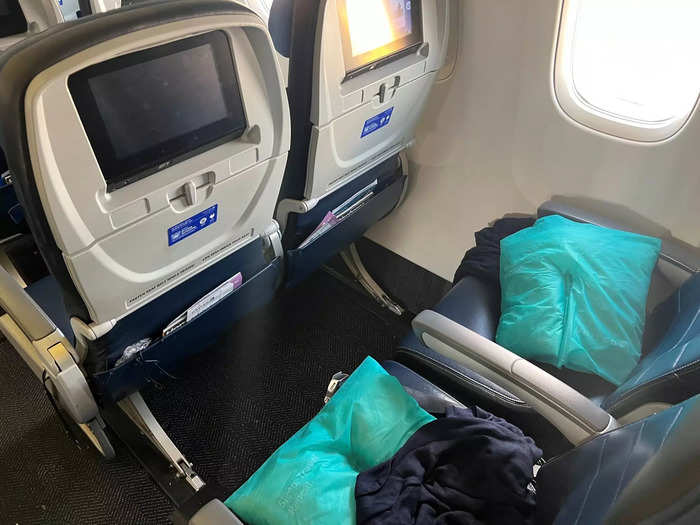
The flights made the differences in comfort, service, and overall enjoyment between US airlines and the five-star carriers more blatantly obvious.
Carriers like Singapore put in significant investments in flight attendant etiquette and service training.
While I came to this realization on my United flights, the same goes for pretty much any other mainline carrier I've flown on — though I know I still need to try out Qatar Airways and Emirates.
For example, most airlines lacked the cupholders that were present on Singapore and Korean, which stood out as a particularly convenient perk.
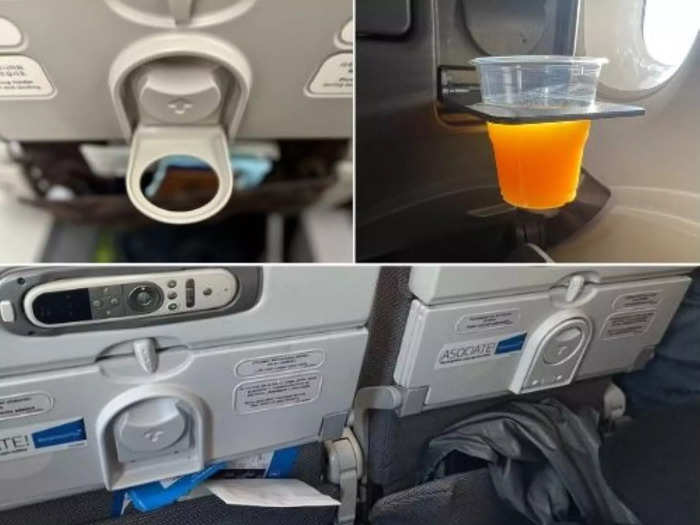
I like having a separate cupholder available because it helps during turbulence. Both Singapore and Korea had one.
Shockingly, even Aerolineas had a cupholder, which was another one of its random added amenities. But mine was broken anyway.
Things like a clean and stocked bathroom, tasty food, and better linens were also present on the Asian airlines, and they truly make a big difference.
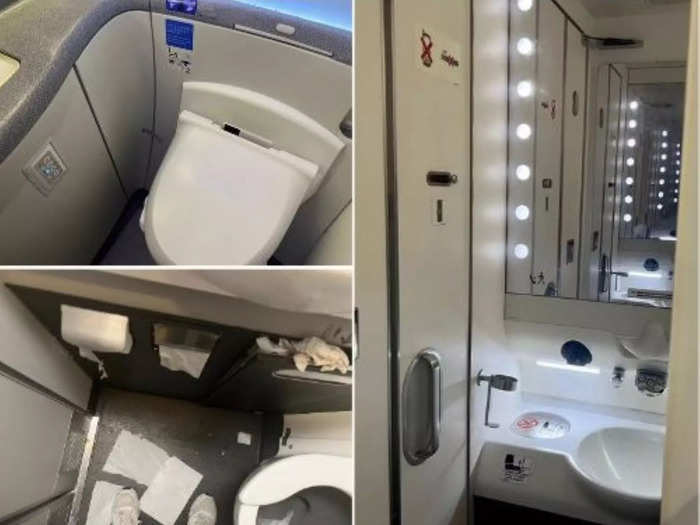
ANA even had an onboard bidet, which makes sense given it's a Japanese carrier. Its competitor Japan Airlines has also installed the fancy toilet on many of its jets.
Singapore didn't have a bidet, but it was clean and featured a full-body mirror and a touchless trash can. United's lavatory on my recent flight, however, was pretty nasty the entire journey.
The five-star food was particularly impressive, each offering traditional meal options like noodles, rice porridge, sushi, and edamame.
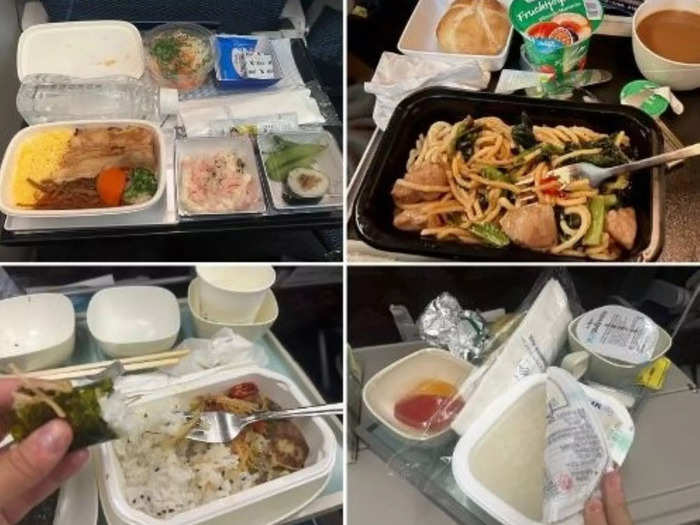
Passengers could also choose from more Western-style meals, like chicken and potatoes.
The three airlines also offered actual silverware with each meal — a nice change from the bamboo and plastic options on the others.
While not the most visually appealing food, the meals on Delta were the best among the North American airlines.
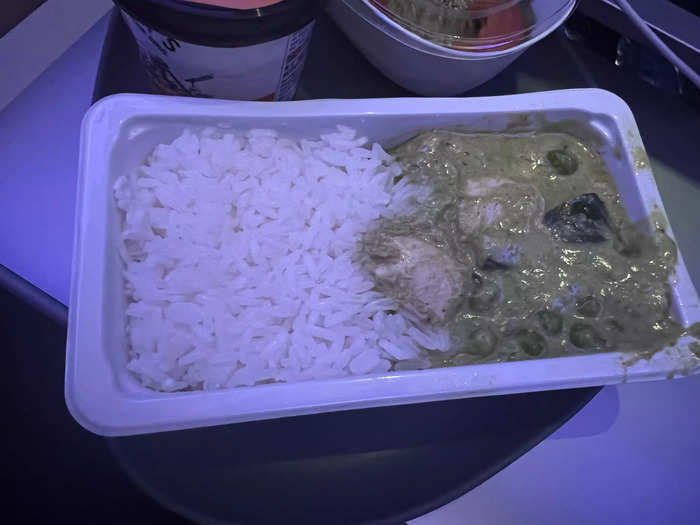
The curry I had on Delta looked gross. But, it smelled and tasted good — and I liked the side and dessert.
Air Canada's food, on the other hand, was basically inedible. United and Aerolineas' weren't the best, either.
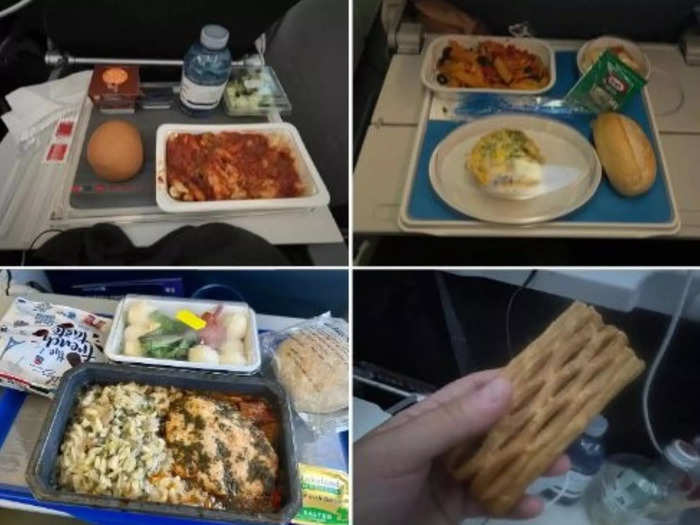
Air Canada offered tasteless pasta and cucumber salad with too much dressing for the first meal. The second dish on my flight from London to Montreal was worse with a texture similar to that of baby food.
Meanwhile, United is known for its less-than-stellar catering and my recent August flight was no different. Aerolineas also offered bland food, similar to that of a high school lunch.
Both were better than Air Canada's, though — but still nothing to write home about.
While I didn't eat much onboard, Air Canada's 787 cabin was perfectly comfortable. But, I'd still prefer United, Delta, and even Norse over it.
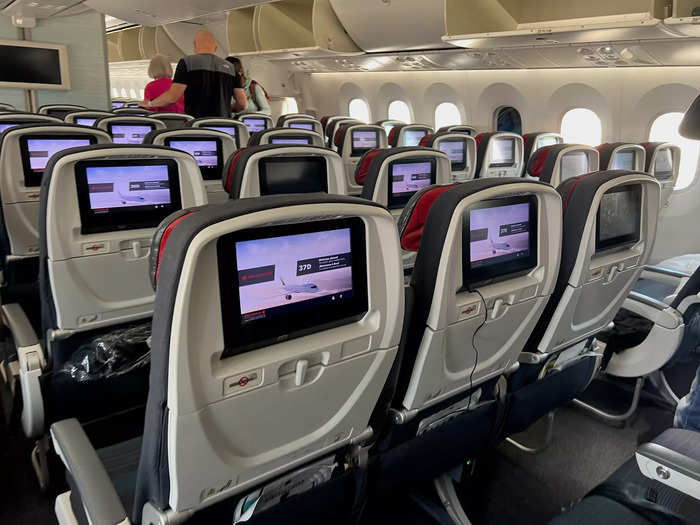
Due to the food, it's unlikely I'll fly on Air Canada again, especially since I'll have more preferable options available as I live right outside of New York City.
Norse was actually the biggest surprise among the nine airlines I've flown on over the past 14 months.
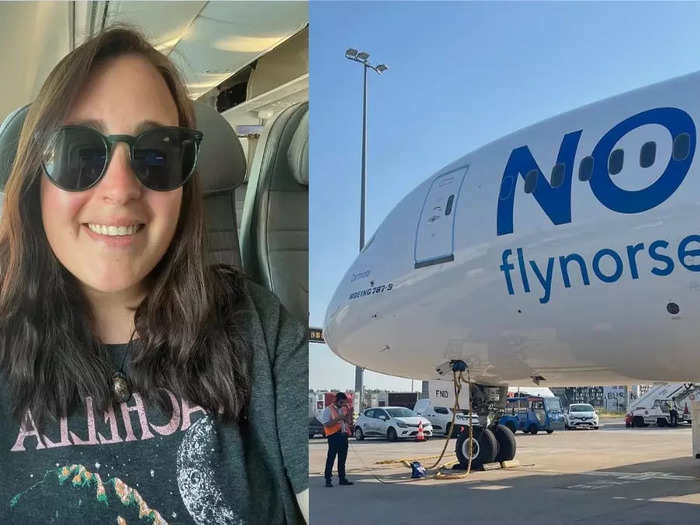
Norse is a low-cost carrier, so I knew going in that extras like snacks, drinks, bags, and linens would cost extra. So, I bundled my Paris to New York fare to have one meal and checked luggage already included.
This is thanks to its well-cushioned seat, good food, headrest, and 31 inches of pitch — which is more than expected for a budget airline.
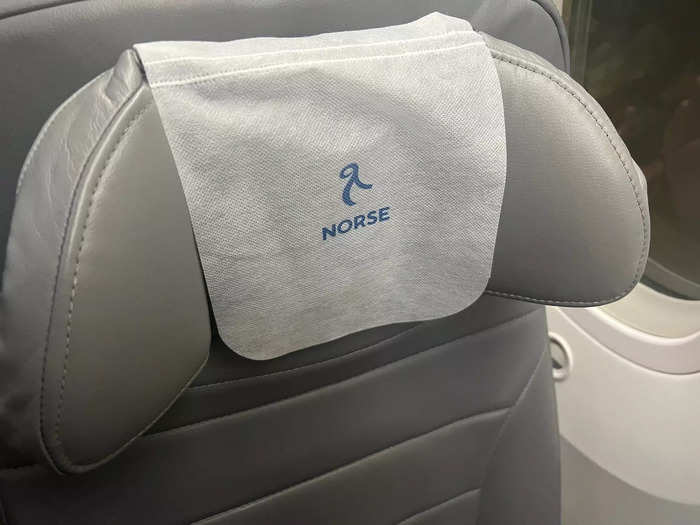
Norse offered much more than I expected for a low-cost airline. It has legroom equal to that of Delta, United, and American Airlines, as well as overall more adequate space compared to LEVEL.
Plus, it had a USB port and a surprisingly good meal of fish, potatoes, spinach, a roll, and chocolate pudding — better than United, Air Canada, and Aerolineas.
Based on all of the pros and cons I've highlighted, Singapore offered the overall best economy experience out of the nine carriers.
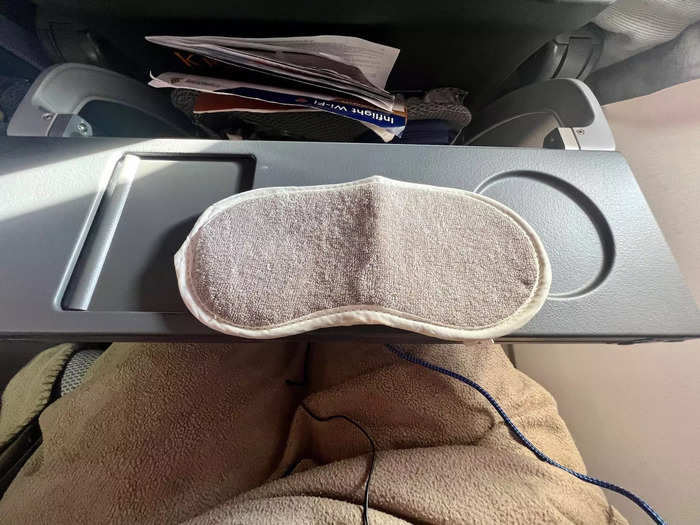
The things ANA has over Singapore are the lavatory bidet, legroom, and footrest, but none are enough to outshine Singapore's premium food, linens, storage, and overall comfort.
Other travelers may prefer ANA's extra leg space, but because I'm shorter and on the smaller size, I was able to cozy up in my window seat on Singapore. I actually got the best sleep on this flight, sleeping for eight of the 12 hours onboard.
ANA and Korean also had great products, with Delta being my favorite of the North and South American carriers.

ANA is an extremely close second to Singapore in terms of economy, though the Japanese carrier beats Singapore when it comes to business class thanks to its luxe "The Room" cabin.
Korean is third due to its lack of internet access and lackluster pillow, but I loved that it offered an actual amenity kit and a cupholder. Plus, flying on the 747 was a special perk.
Meanwhile, the food and space on Delta — as well as the convenient eye mask — put it above United.
Now, while I have picked on United and it's lower on my personal ranking list, I still think it's a good airline and one I'll continue to fly on.
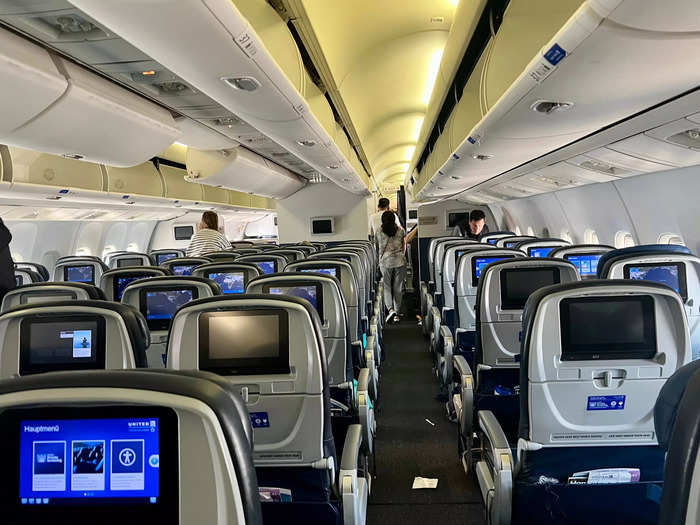
The problem with United is that it can't get its food right. I've flown on the carrier several times over the years and remember the catering being much better, but it has gone downhill — though that could just be a pandemic-era issue still lingering into 2023.
And, while I would love to see an improved pillow onboard, I'll still fly the carrier again because it has a great network out of its Newark base. I just know to bring my own comforts when I can.
However, at the bottom of the pack is LEVEL.
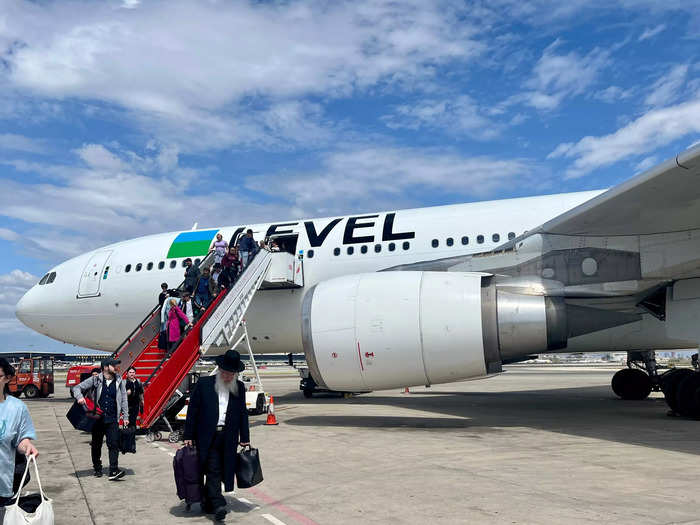
LEVEL offered a rough ride. Because my flight left at almost midnight, I skipped paying for a meal and just tried to sleep — so I can't comment on the food.
But, the Spanish airline ended up being the only carrier that I couldn't sleep on — the plane's 2x4x2 seat configuration was just too cramped, especially when the row in front reclined.
I also ranked Air Canada and Aerolineas lower than the other mainline carriers on the list.
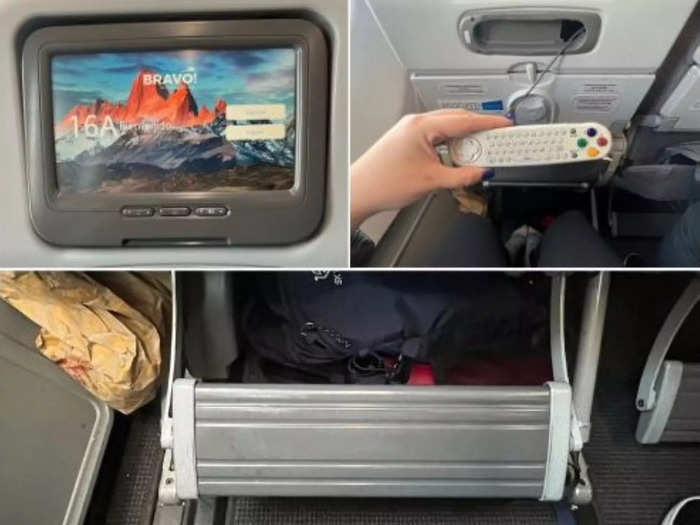
While Air Canada's 787 was comfortable, its abysmal food is hard to ignore as a factor.
So, since both Norse and Aerolineas offer the same legroom and similar amenities — yet slightly better food — they pull ahead in the ranking.
Aerolineas was just a mixed bag of pros and cons, though. What makes me like it just a little bit more than Air Canada was the random footrest and its nifty remote for the TV.
I still rank it below Norse, however, especially because of the lack of WiFi and power ports — something that you'd think would be available on Argentina's national airline.
Norse I can forgive for not having internet because that's expected for a low-cost carrier.
Norse was the airline that most exceeded my expectations, and I'd actually easily book it over other low-cost options — and even some mainline carriers if the price is right.
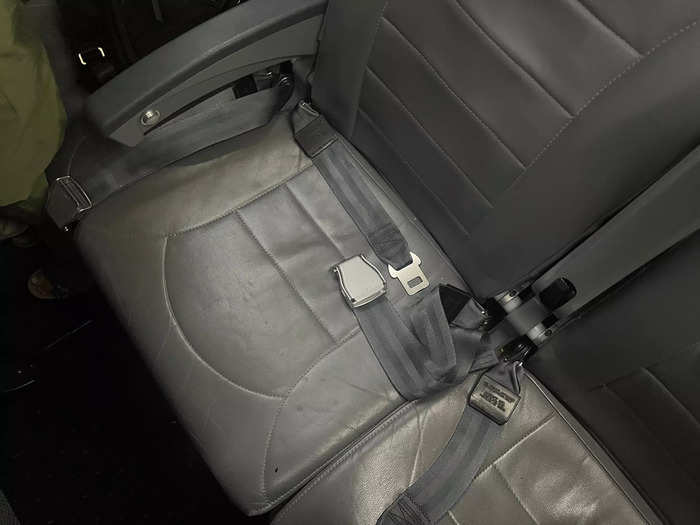
When I booked Norse, I was expecting something similar to LEVEL — but I was pleasantly surprised by the generous legroom and good food.
It's easily the best bang for your buck across the Atlantic right now as fares are typically lower than United, Delta, American, and other major international airlines.
For example, a one-way flight from an NYC-area airport to Berlin on October 17 is about $200 on Norse — it's over $1,000 on both Delta and United, according to Google Flights.
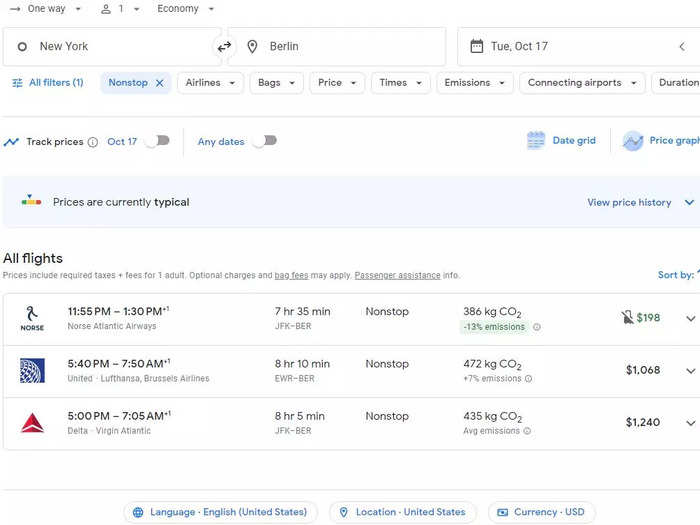
Looking at flights to London in early 2024 — which is a daily service on Norse — the budget airline's fare sits around $140 to $300 one-way throughout January, February, and March.
Ticket prices on Delta and United are higher, with competitors including Virgin Atlantic Airways, British Airways, JetBlue Airways, and American Airlines also consistently being a few hundred dollars more expensive.
Granted, Norse's fares are all unbundled — but they can still be significantly cheaper even with the extra fees. It's still good to do the math before booking.
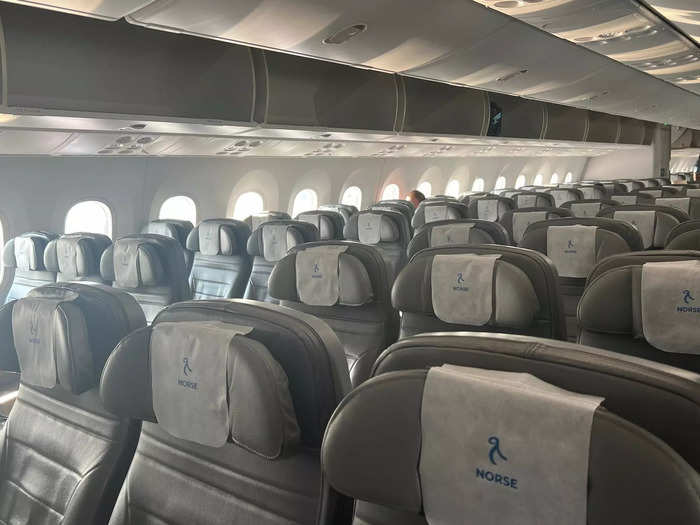
Most mainline competitors are going to offer an overall better product over Norse. If all of your add-ons put the Norse fare above one of the mainline competitors, I'd book the latter instead.
Popular Right Now
Popular Keywords
Advertisement